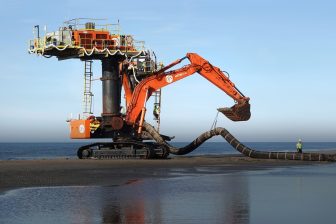EBRD sees fragile recovery from the crisis
Recovery remains slow on average; volatility on western markets adds to risks, especially in southeastern Europe
The countries of eastern Europe face an uncertain period of recovery out of the global economic crisis, with increasing differences in the pace of growth across countries, and new risks arising from fiscal pressures and financial volatility in western Europe.
The EBRD’s latest economic outlook (0.6Mb) has revised up its average growth forecasts (0.1Mb) for the region to 3.7 percent in 2010 from the 3.3 percent predicted in January.
This revision reflects upgrades to growth in some of the largest economies in the region, including Russia, Turkey, Poland, Hungary, and Ukraine. However, growth forecasts in some other countries, such as Romania and Bulgaria, have been revised down. Most countries are continuing to experience a slow recovery, and some face further output declines.
The recession has been generally deeper and the recovery will be slower than in other emerging markets. This is particularly pronounced in the Baltic countries and in the countries of southeastern Europe (SEE), where “most recent data provide little evidence of a sustained recovery so far. Growth prospects in these countries have been revised downward since the last EBRD forecasts in January 2010”, according to the report.
“The deep recessions of late 2008 and 2009 continue to have knock-on effects in the form of high non-performing loans and unemployment, which constrain credit growth and the recovery of domestic demand. Crisis induced deficits and limited sovereign market access will require fiscal consolidation in many countries, which will also weigh on demand.”
The report says that while domestic risks to the economic outlook have declined in recent months, external risks have been rising as fiscal problems and financial volatility in western Europe have become more acute.
“Encouragingly, the crisis in Greece has not had significant spillovers to the transition region so far; however, this remains a possibility, particularly in south-east European countries in which Greek banks are strongly represented. Another risk is weaker EU growth as a result of either fiscal consolidation, or renewed problems in the European banking sectors,” it said.
Continued loose monetary policy in the eurozone is one factor that could provide upside support.
The report highlights clear differences in the pace and depth of recovery. In addition to the general weakness of the SEE region and the Baltic countries, political problems in the Kyrgyz Republic are hindering the pace of recovery.
However, Russia and the Slovak Republic are rebounding faster than originally expected, reflecting commodity prices rises and the gradual return of capital flows in the case of Russia and a recovery in automobile exports in the Slovak Republic. Although the Hungarian economy is expected to grow only modestly this year, its prospects have also been lifted slightly by renewed capital inflows.
More vigorous growth is also being seen in Turkey, because of a projected recovery in capital inflows, and in Armenia, on the back of rising copper prices and remittances.
The report says that the Central Europe and Baltics region is benefiting from a pick-up of exports to western Europe and stronger than expected inflows of short term capital. As a whole the region is expected to grow by 1.8 percent this year, compared with 1.4 percent seen in January, and by 3 percent in 2011. But there are stark differences, with Poland lifting the average substantially, while the deep recessions in Latvia and Lithuania have only just begun bottoming out.
In most countries in the SEE region the pace of recovery is likely to remain sluggish, with average growth of just 0.3 percent expected this year, compared with a January forecast of 1.2 percent, followed by 2.9 percent next year. In addition, the crisis in Greece has the potential both for direct spillovers into several countries where trade, investment and financial linkages are strong. Growth is likely to be negative or zero in the two EU members, Bulgaria and Romania.
Countries in eastern Europe and the Caucasus are generally expected to grow more strongly, having recently benefited from a reversal of market confidence in emerging markets and higher commodity prices, although vulnerabilities remain significant.
Ukraine, which saw the sharpest economic contraction of this region last year, is now seeing an improvement, with growth forecast at four percent, compared with three percent seen in January. Market sentiment has improved since elections and a re-engagement with the International Monetary Fund.
In Russia, the growth momentum of late 2009 is likely to be sustained, implying a growth of about 4.4 per cent in 2010, after a 7.9 per cent reduction in 2009 and a forecast of 3.9 percent in January.
U las zojuist één van de gratis premium artikelen
Onbeperkt lezen? Profiteer nu van de introductieaanbieding voor € 10,- per maand.
Bent u al abonnee?



